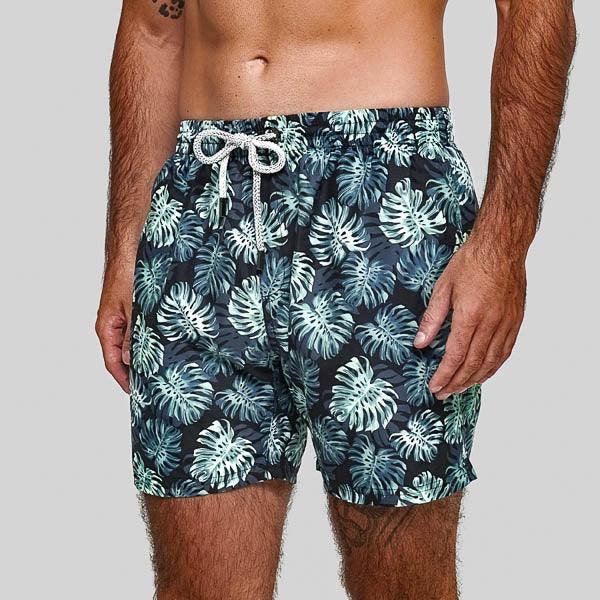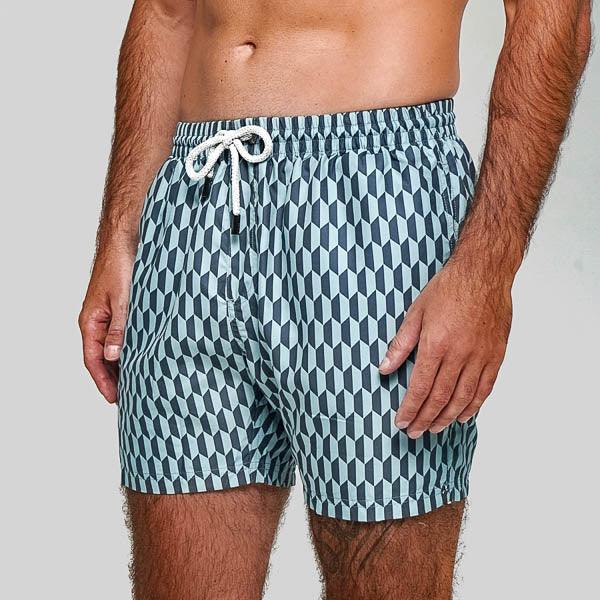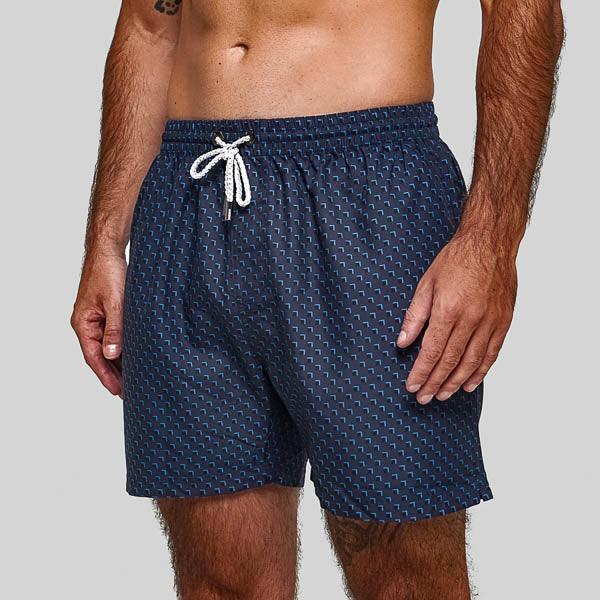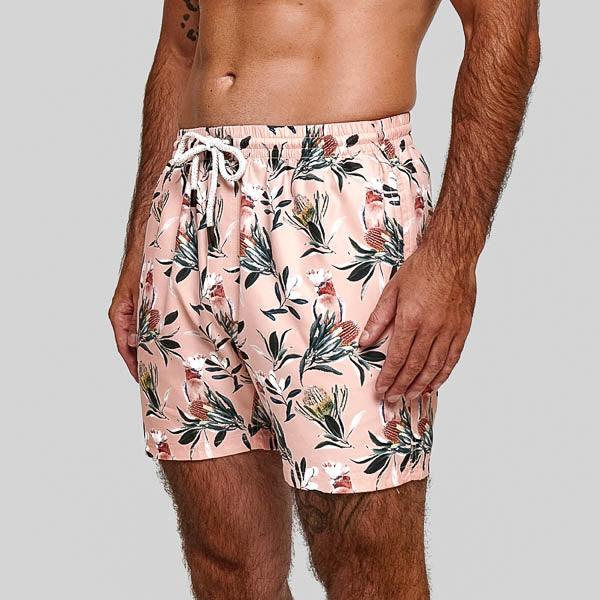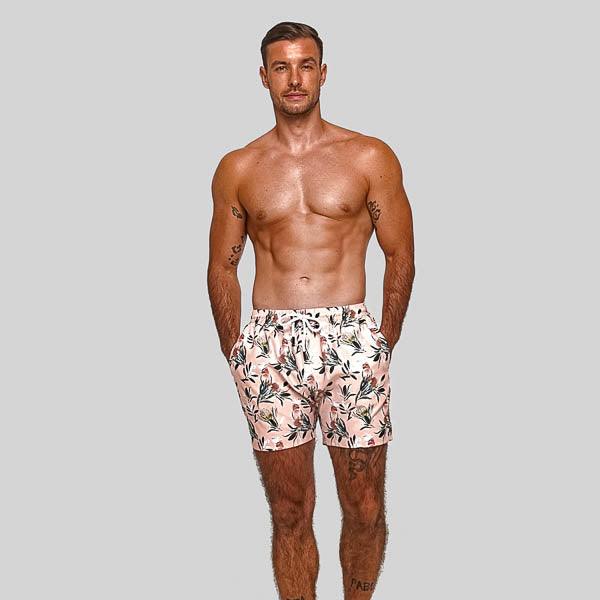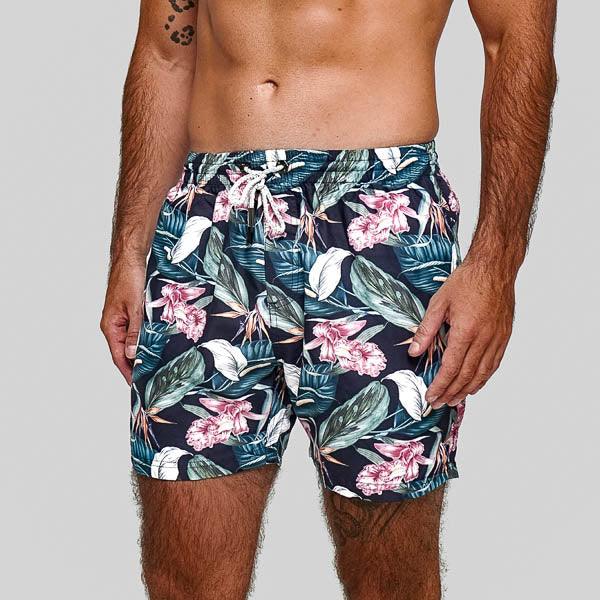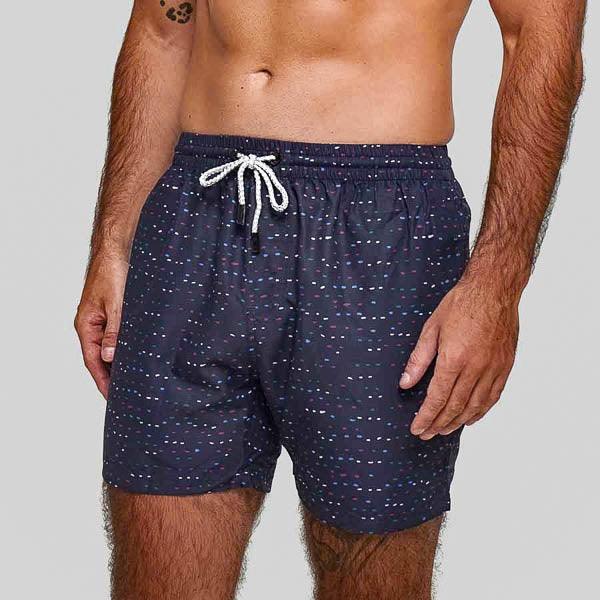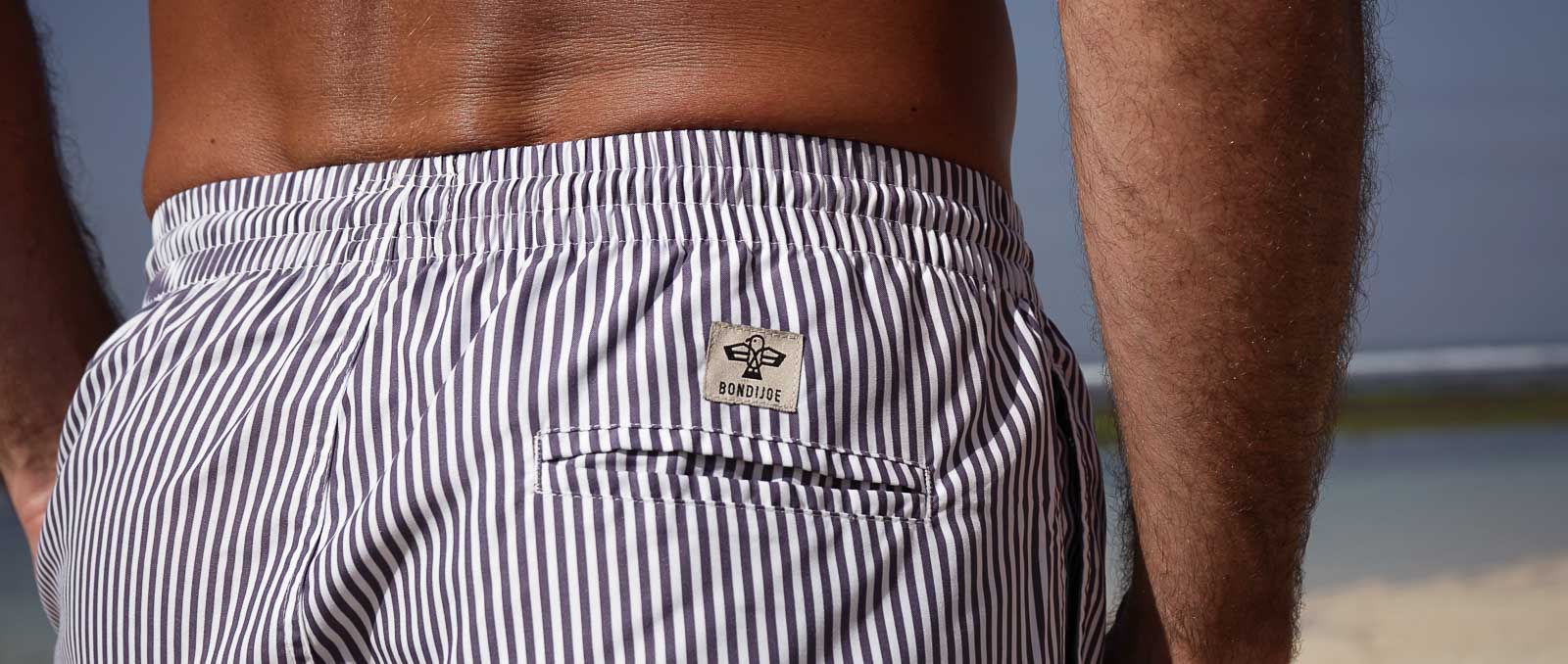As the fashion industry faces increasing scrutiny over its environmental practices, the spotlight has turned to swimwear. The environmental impact of men's swim trunk fabrics is a growing concern, with traditional materials like polyester and nylon contributing significantly to pollution and resource depletion. In this comprehensive guide, we will explore the environmental ramifications of these fabrics, examine sustainable alternatives, and discuss how consumers can make more eco-friendly choices. Be sure to checkout our other guides to mens swim trunk sustainability and ethical production.
Understanding Traditional Swimwear Fabrics
What are Traditional Swimwear Fabrics?
Traditional swimwear fabrics primarily include synthetic materials such as polyester, nylon, and spandex. These materials are favored for their durability, elasticity, and resistance to water and chlorine. However, their production and disposal have significant environmental consequences.
Why are They Popular?
Synthetic fabrics are popular in swimwear for several reasons:
- Durability: They withstand the wear and tear of swimming in chlorinated pools and saltwater.
- Stretch: They provide the necessary elasticity for comfort and movement.
- Quick-Drying: They dry faster than natural fibers, enhancing comfort and convenience.
The Environmental Impact of Polyester
Production Process
Polyester is derived from petroleum, a non-renewable resource. The production process involves energy-intensive steps that result in significant greenhouse gas emissions. According to the Textile Exchange, producing one kilogram of polyester generates about 9.52 kilograms of CO2.
Microplastic Pollution
When polyester swim trunks are washed, they shed microfibers, tiny plastic particles that end up in waterways and oceans. These microplastics pose a severe threat to marine life and ecosystems, as they can be ingested by aquatic organisms, entering the food chain and potentially impacting human health.
Waste Management
Polyester is not biodegradable, meaning it can persist in the environment for hundreds of years. Discarded swim trunks contribute to the growing problem of textile waste in landfills.
The Environmental Impact of Nylon
Production Process
Nylon, like polyester, is made from petroleum. Its production involves the emission of nitrous oxide, a greenhouse gas that is 310 times more potent than carbon dioxide. The energy-intensive process also consumes significant amounts of water and fossil fuels.
Waste and Recycling Challenges
Nylon is difficult to recycle due to its complex chemical structure. While some advancements have been made in recycling technologies, most nylon swim trunks still end up in landfills, contributing to long-term environmental pollution.
Ocean Pollution
Nylon fishing nets, often discarded in oceans, pose a major threat to marine life. Known as "ghost nets," these discarded nets can entangle and kill sea creatures, disrupting marine ecosystems.
The Environmental Impact of Spandex
Production Process
Spandex, also known as Lycra or elastane, is a synthetic fiber known for its exceptional elasticity. The production process involves the use of toxic chemicals such as polyurethane, which can release harmful substances into the environment if not properly managed.
Longevity and Waste
While spandex enhances the stretch and comfort of swim trunks, its non-biodegradable nature means it contributes to long-lasting waste. Spandex blends complicate the recycling process of garments, often resulting in disposal rather than recycling.
Sustainable Alternatives to Traditional Swimwear Fabrics
Recycled Polyester (rPET)
Recycled polyester, or rPET, is made from post-consumer plastic waste, such as PET bottles. This process reduces the reliance on virgin petroleum and cuts down on greenhouse gas emissions. rPET offers similar performance characteristics to virgin polyester, making it a viable alternative for swimwear. Bondi Joe's range of mens swimwear is made from Recucled Polyester.
Econyl® Regenerated Nylon
Econyl® is a brand of regenerated nylon made from recycled waste materials, including fishing nets and fabric scraps. This closed-loop process reduces waste, lowers greenhouse gas emissions, and produces high-quality nylon suitable for swimwear.
Organic Cotton
Organic cotton is grown without the use of synthetic pesticides and fertilizers, reducing environmental pollution and promoting biodiversity. While not as quick-drying or elastic as synthetic fibers, organic cotton is a sustainable option for less performance-intensive swimwear.
Natural Rubber
Natural rubber is an eco-friendly alternative for swimwear components like waistbands and trims. Sourced from rubber trees, it is biodegradable and offers a sustainable replacement for synthetic elastics.
How to Choose Sustainable Swimwear
Look for Certifications
Certifications such as Global Recycle Standard (GRS), OEKO-TEX, and Bluesign indicate adherence to environmental and ethical standards. These certifications help ensure the swimwear is made from sustainable materials and produced under safe and fair working conditions.
Research Brands
Support brands that prioritize sustainability and transparency. Many brands provide detailed information about their materials, production processes, and sustainability initiatives on their websites.
Consider Longevity
Choose high-quality swimwear designed to last. Durable swim trunks reduce the frequency of replacements, ultimately decreasing environmental impact.
Proper Care and Maintenance
Extend the life of your swimwear by following care instructions. Rinse swim trunks in cold water after use, avoid harsh detergents, and air dry to prevent damage and maintain fabric integrity.
The Role of Consumers in Promoting Sustainability
Making Informed Choices
Consumers play a crucial role in driving demand for sustainable products. By choosing swimwear made from eco-friendly materials and supporting ethical brands, consumers can encourage the fashion industry to adopt more sustainable practices.
Advocating for Change
Consumers can also advocate for better industry practices by supporting policies that promote sustainability and holding brands accountable for their environmental impact. Engaging in conversations about sustainability and spreading awareness can drive collective action.
The Future of Sustainable Swimwear
Innovations in Materials
The future of sustainable swimwear lies in continued innovation. Researchers are exploring new materials such as biodegradable fabrics and bio-based polymers that offer similar performance to traditional synthetics without the environmental impact.
Industry Collaboration
Collaboration across the fashion industry, from suppliers to brands to consumers, is essential for advancing sustainability. Joint efforts in research, production, and marketing can accelerate the adoption of eco-friendly practices.
Increased Consumer Awareness
As awareness grows, consumers will continue to drive demand for sustainable products. Education and transparency are key to fostering a more responsible and informed consumer base.
Conclusion
The environmental impact of traditional men's swim trunk fabrics is significant, but the rise of sustainable alternatives offers hope for a greener future. By understanding the consequences of conventional materials and embracing eco-friendly options, consumers can make a positive impact on the environment. The fashion industry, driven by consumer demand and innovation, is gradually shifting towards more sustainable practices, paving the way for a more responsible and eco-conscious future.
FAQs
What are the environmental impacts of traditional men's swim trunk fabrics?
Traditional men's swim trunk fabrics, such as polyester, nylon, and spandex, contribute to pollution, greenhouse gas emissions, and microplastic contamination. These materials are derived from non-renewable resources and are not biodegradable, leading to long-term environmental consequences.
What are sustainable alternatives to traditional swimwear fabrics?
Sustainable alternatives to traditional swimwear fabrics include recycled polyester (rPET), Econyl® regenerated nylon, organic cotton, and natural rubber. These materials reduce environmental impact and promote circularity in fashion.
How can I choose sustainable swimwear?
To choose sustainable swimwear, look for certifications like GRS, OEKO-TEX, and Bluesign. Research brands that prioritize sustainability and transparency, and opt for high-quality, durable swimwear to reduce the frequency of replacements.



